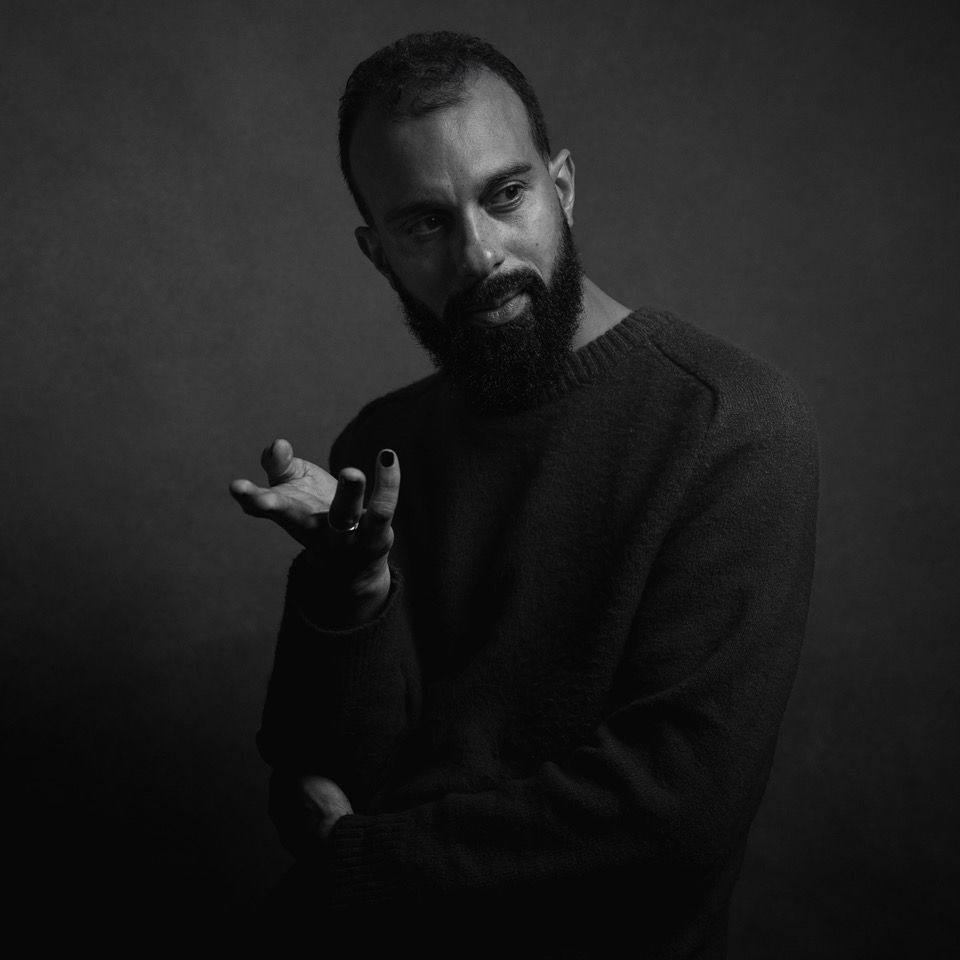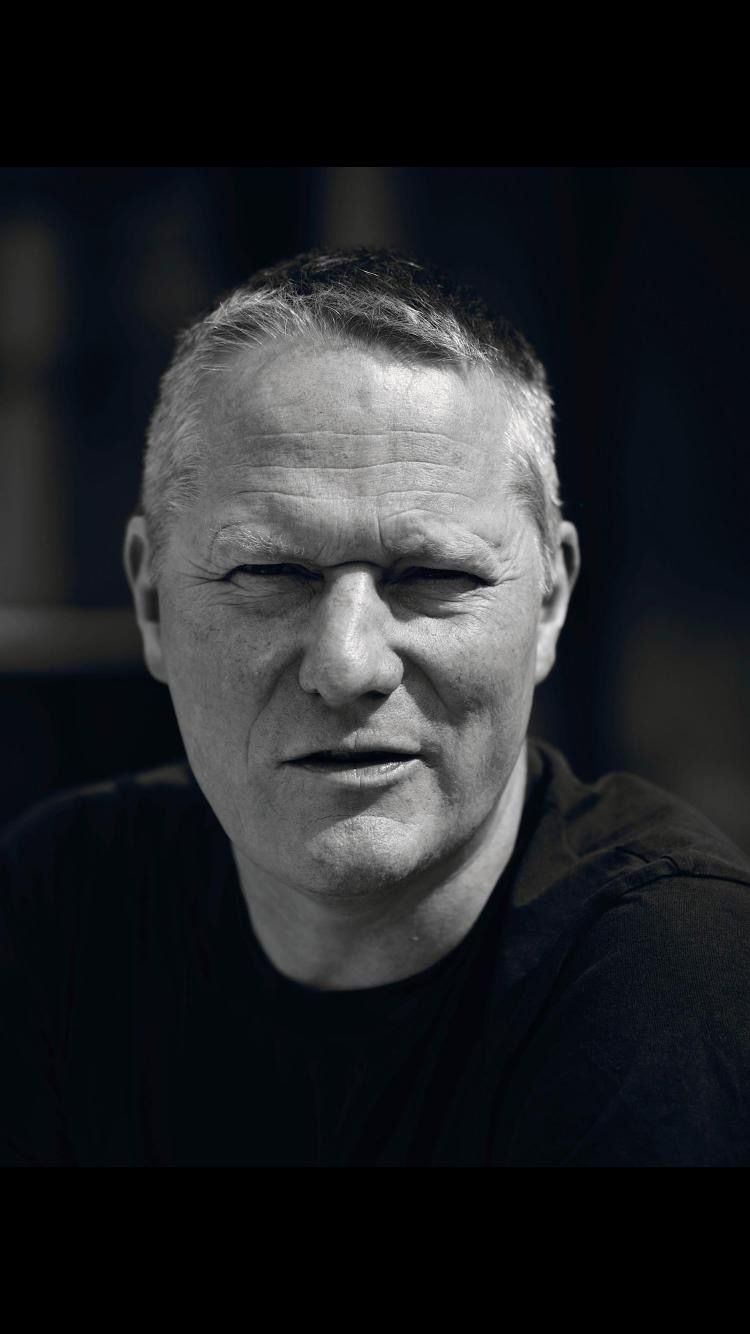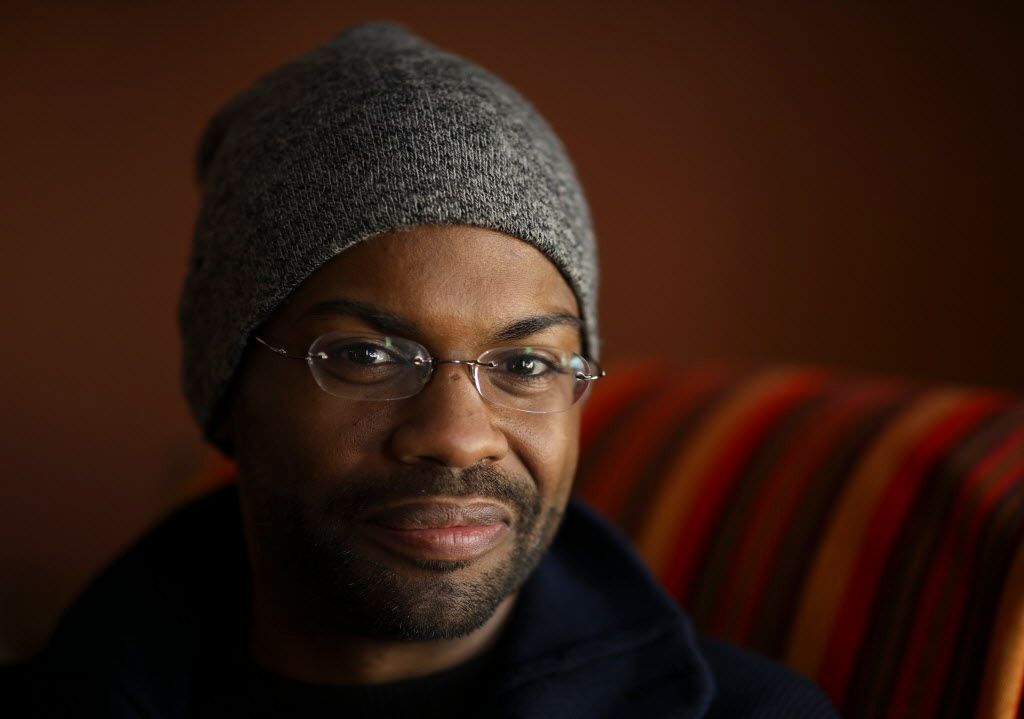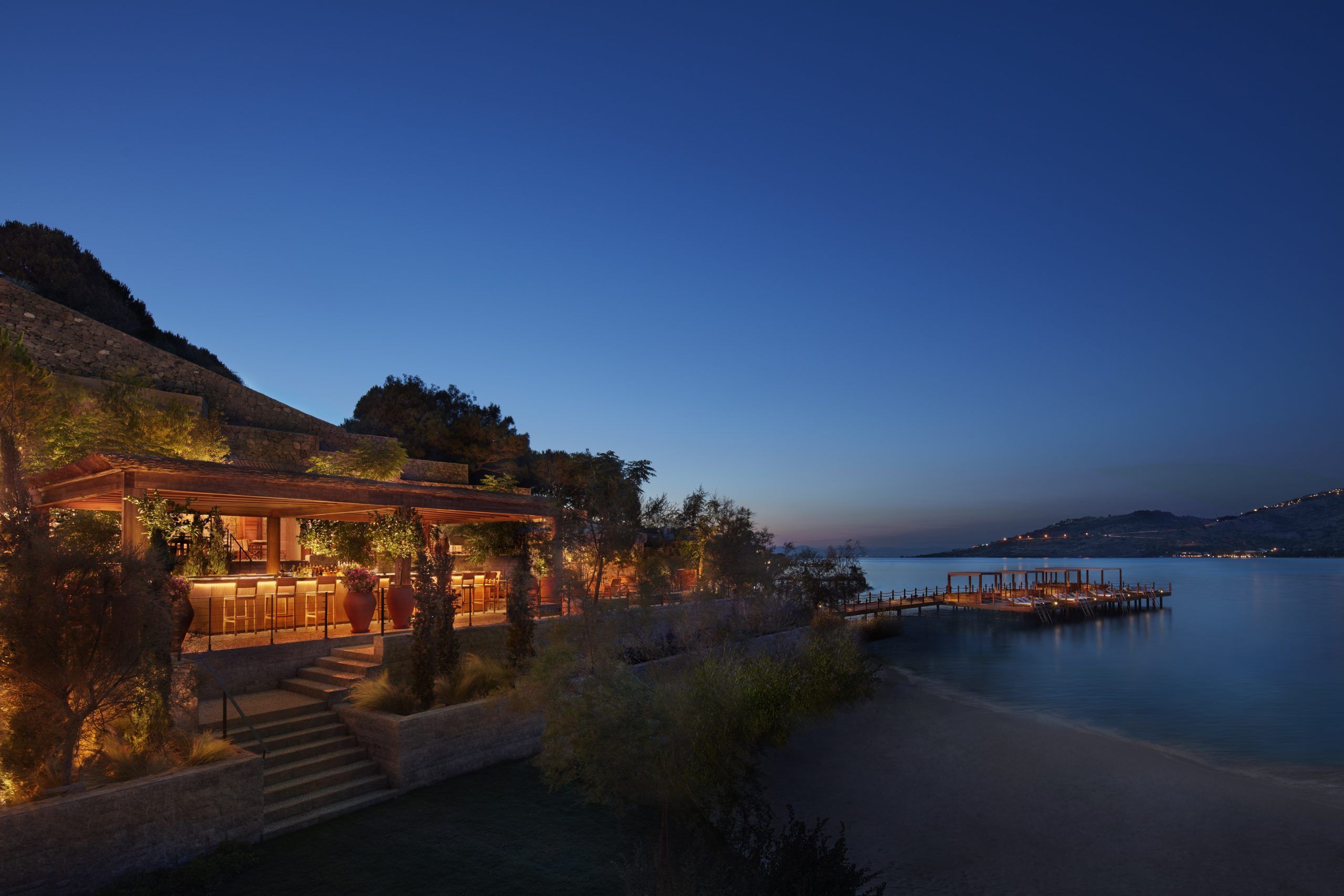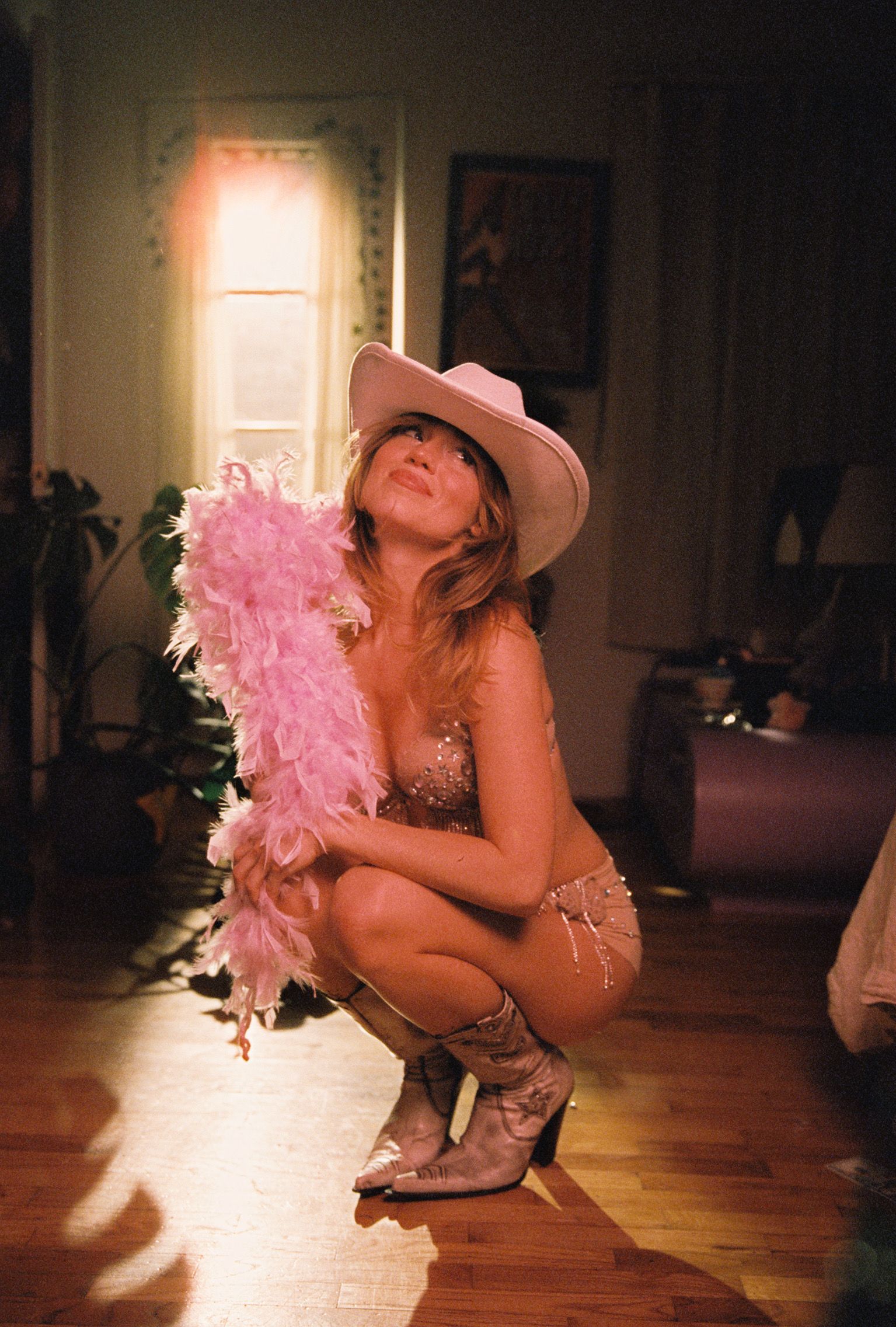In a world increasingly dominated by spectacle and distraction, Tambo & Bones (full review here) cuts through the noise with sharp satire, dark humour, and uncompromising honesty. Currently touring the UK, the play is a searing exploration of the commodification of Black culture – from minstrelsy to modern hip-hop – and what it really costs to perform pain for profit. Yet somehow, it also manages to be really, really funny.
At the helm is multi-award-winning director Matthew Xia, whose body of work spans theatre, music, activism, and storytelling across mediums. A former BBC 1Xtra DJ (as Excalibah), Xia brings his deep love and critique of hip-hop to a play that questions who owns culture – and who pays the price.
I sat down with Matthew to talk about Tambo & Bones, the reaction it’s been getting on tour, Kendrick Lamar’s Super Bowl set, race and capitalism, and how to stage something that’s as daring as it is devastating.
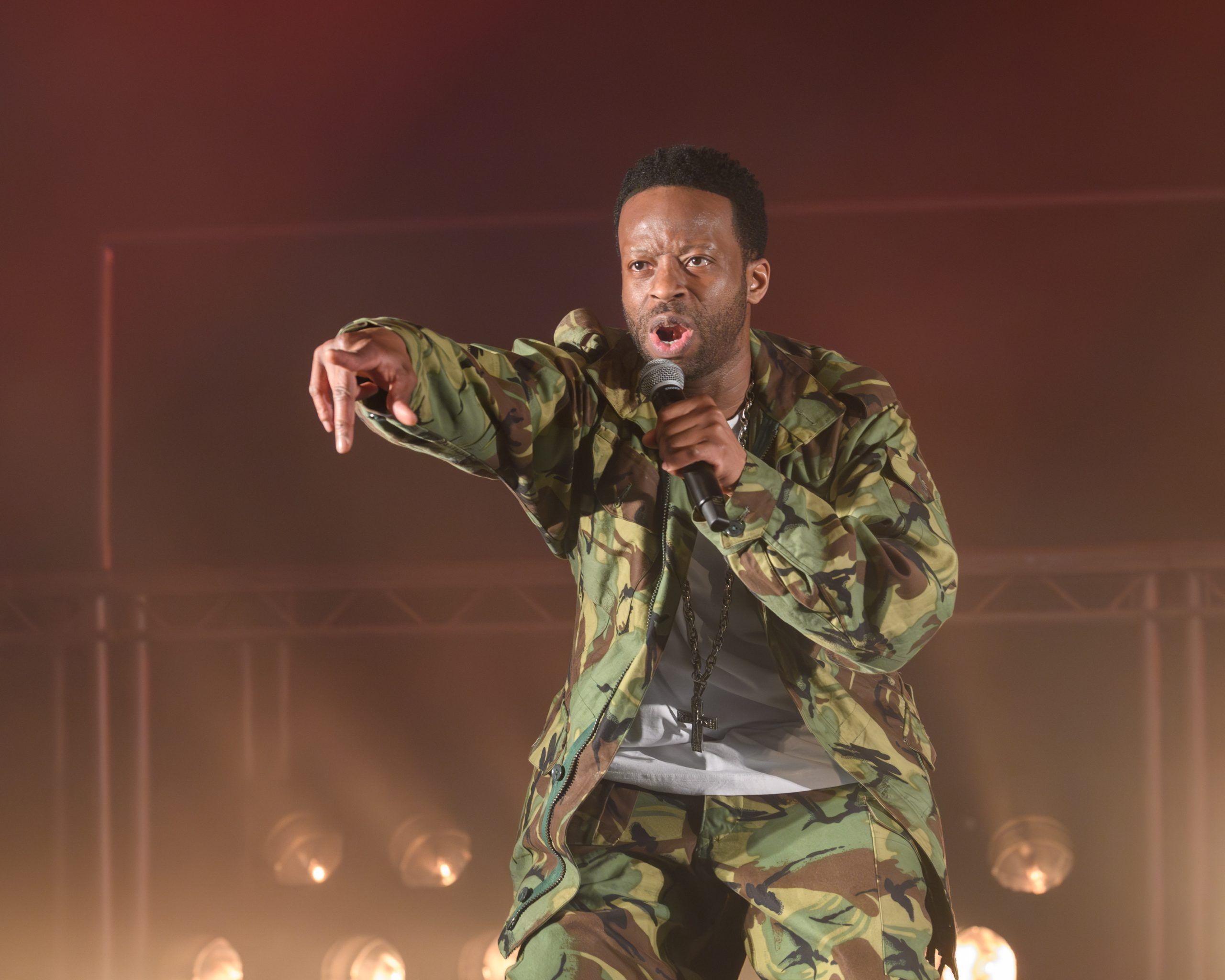
Tambo & Bones is wild, funny, and brutally sharp. What was it about Dave Harris’ script that made you want to direct it?
The audacity of it, really. It’s bold, brave and gloriously naughty. Like the kid who pokes holes in the sugar-paper display at school. It knows exactly what it’s doing. I’d never encountered a script that so confidently invites an audience in, and then takes them on such a provocative journey.
And then there’s the hip-hop. I was a DJ for about 20 years, and I’ve got around 6,000 records sitting behind me at home. So the fact that the middle act becomes a hip-hop concert, while also interrogating the transaction of Black culture within hip-hop – what are we selling, who’s buying it, and what are they really buying into – that really grabbed me. It’s a play about minstrelsy, Black minstrelsy, and it isn’t afraid to ask hard questions.
It also throws out ideas that seem ridiculous on the surface but carry real weight underneath. There’s a moment that echoes something that ridiculous man Kanye West once said: that people who were enslaved had a choice. It’s a painful, outrageous statement, but the play doesn’t shy away from engaging with that kind of rhetoric. It skips across it lightly in the moment, like a stone skimming water, but you know that just beneath the surface is the full depth of the Atlantic Ocean and all the trauma it holds.
The play jumps from minstrelsy to hip-hop. How do you handle those shifts in tone and style without it feeling all over the place?
You just have to embrace each act on its own terms. The writing carries the audience through, and resisting those shifts would do the play a disservice. We start with two shabbily dressed minstrels in a fake Victorian-American setting, then suddenly we’re in an early 2000s hip-hop world. You just have to go with it. The third act is the trickiest, and we tend not to talk about it too much because it works best when you experience it without expectations.
One of the things Dave Harris does so brilliantly is constantly pulling the rug from under the audience. Just when you think you know where you are, the play reminds you: this is still theatre, this is still now, and the people in this room are the ones who could afford to be here. That self-awareness is woven throughout the script, even in the stage directions. They’re written with the same satirical, conversational tone as the dialogue – sometimes they’re just there to make you laugh before hitting you with something devastating.
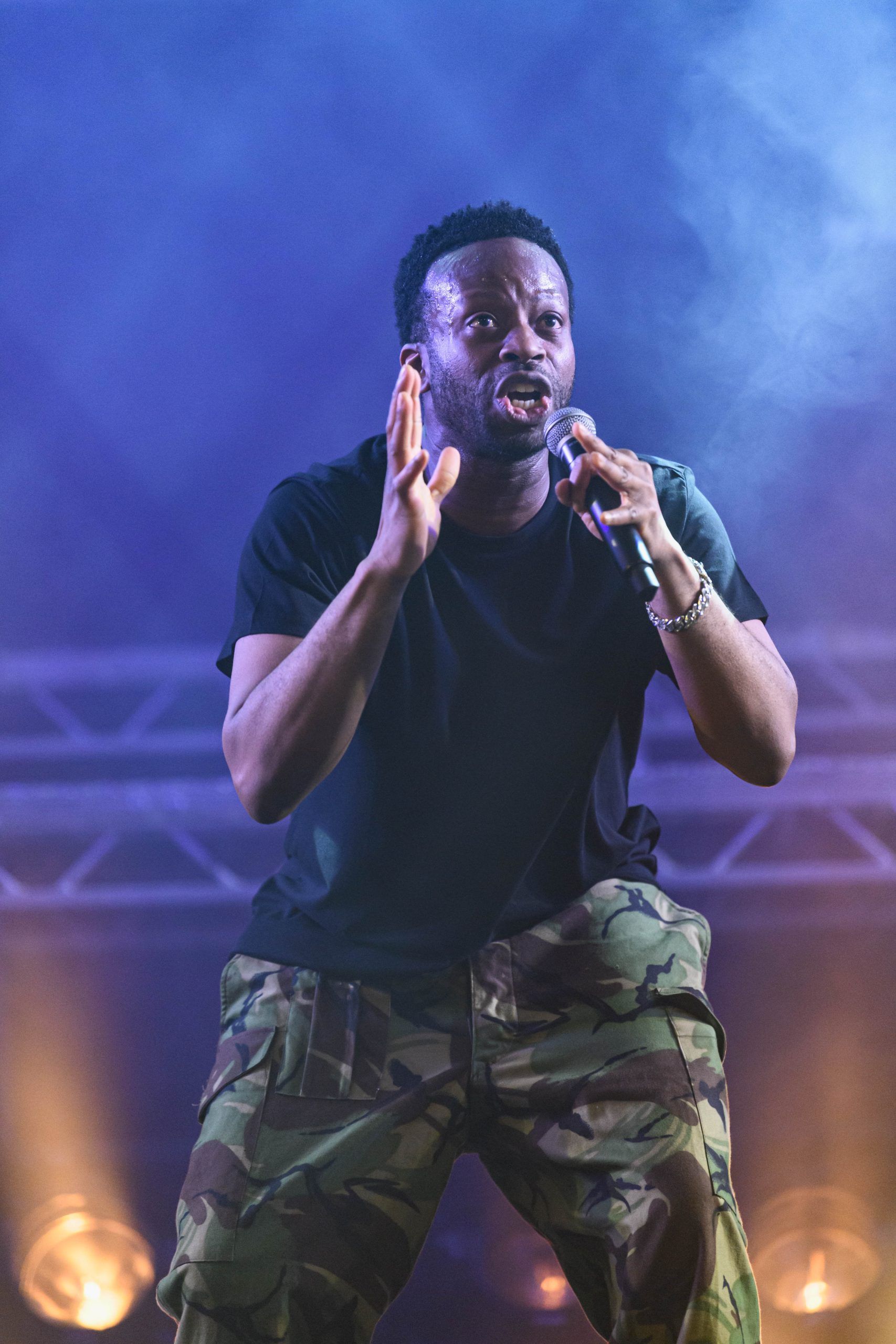
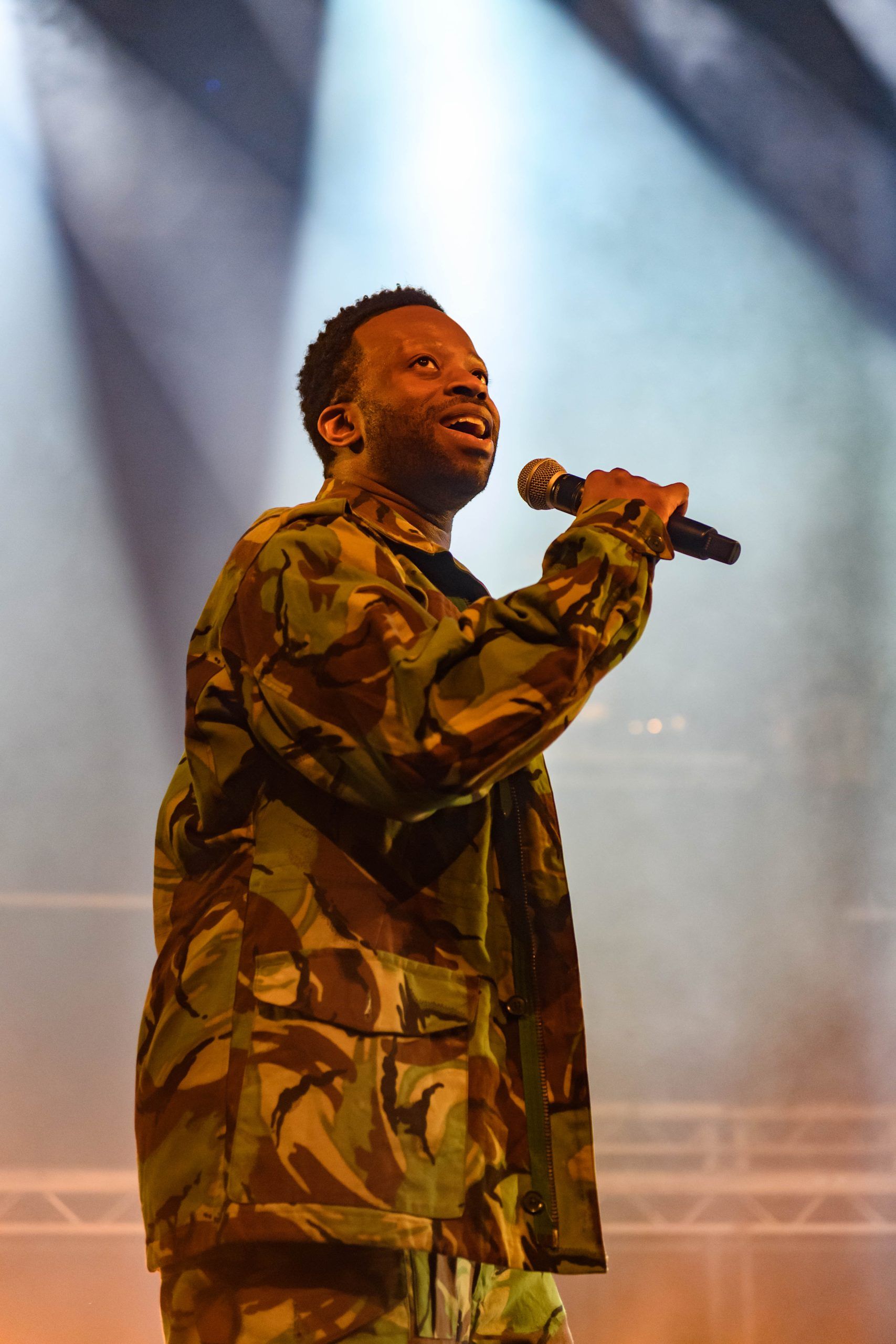
Did you have to make any adjustments for a British audience?
The show was originally written for an American audience, but we made some small tweaks for British audiences. There’s a line in the script where a character asks for quarters, but we threw in a nod to 50 pence pieces, only to dismiss it immediately – because the transaction at the heart of the play isn’t about local currency, it’s about power. We also adjusted a reference to slavery, adding “cut cane” alongside “plant cotton” to acknowledge the Caribbean histories of many Black British people.
A lot of people assume racism in the UK isn’t as bad as in the US, but that’s just because Britain has always been very good at hiding its mess – outsourcing its worst crimes so it didn’t have to look at them. America still has auction blocks with plaques saying slaves were sold here. In the UK, we erased those markers and wrote around them instead. That’s why we have such a great literary cannon and history, because we’re good with words. We’re really, really sly with our use of language.
Do you think the way British audiences receive Tambo & Bones is shaped by the fact that we don’t really get taught about our own history of slavery and race in the same way as in the U.S.?
Yeah, I do. I think British audiences initially react to it as an American import, but hopefully, it pushes them toward meaningful conclusions about their own lives. I hope some people leave thinking, Why am I into hip-hop? because I certainly had to ask myself that. I used to listen to really angry, violent, misogynistic, homophobic music. What was I getting from that? Was it the fantasy of a distant gang world that felt thrilling, dangerous, and exciting?
I think what the play is really about is the commodification of Black lives and Black pain. The play examines how Black pain is packaged and sold, questioning what audiences expect to see and consume. Dave Harris has spoken about how the play came from his own experience as a spoken word artist. When he was 15, a friend of his was shot and killed in West Philadelphia. He wrote a poem about it, processing his grief through art, and every time he performed, he’d hear the same request: Do the one about your dead friend. Over and over. What is in that transaction? What are audiences asking to hear? What are they asking to buy? What are we selling?
You see the same thing in hip-hop. What were N.W.A., Dr. Dre, and Snoop Dogg selling? The N-word is used 133 times in this play – that’s not accidental. If you track its use in literature, music, and print, the exponential rise starts in the late 80s, and I can’t help but think that’s because of hip-hop culture.
And that’s part of what the play is doing – forcing audiences to think about it. You have Tambo, who is deeply conscious and wants to wake people up to how they see the world, and then you have Bones, who believes the only way to change things is to get rich. In their own ways, they both find a path forward.
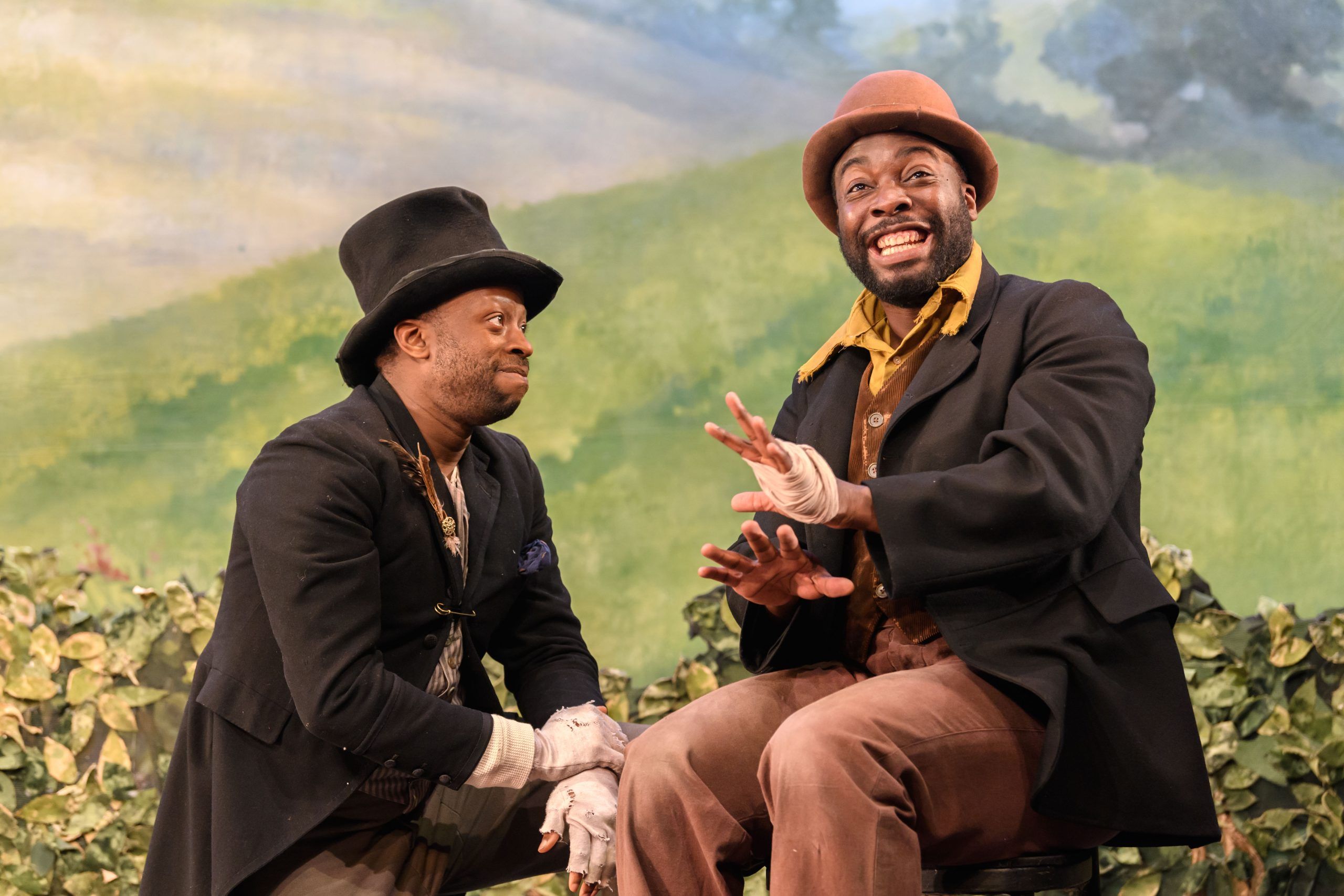
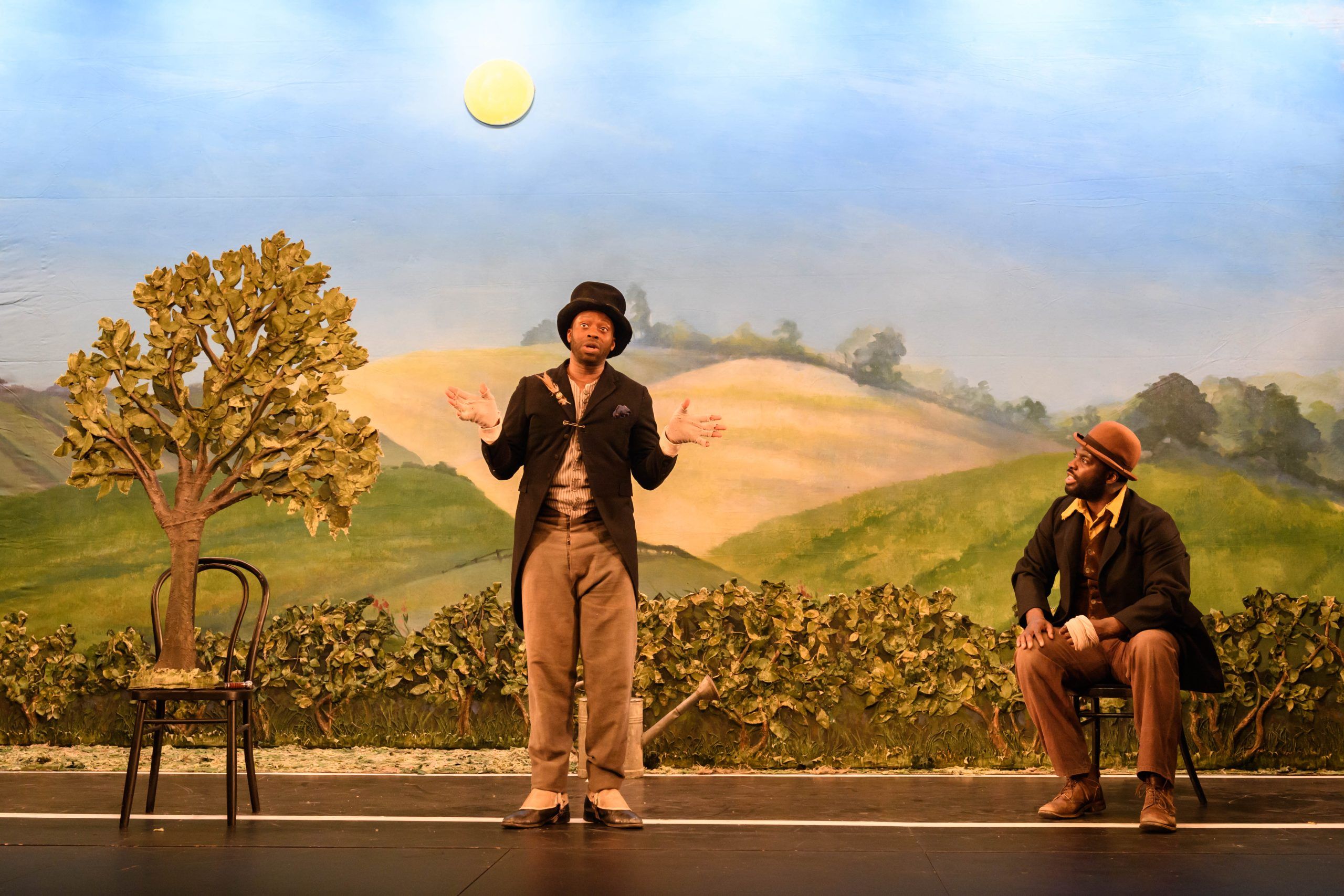
When putting on and marketing a play about how Black art has been bought, sold, and packaged over the years – from minstrelsy to hip-hop – as a director, how do you stop something like Tambo & Bones from becoming the very thing it’s critiquing?
By getting to the third act. This play is about tropes, about being watched, about how people see and interpret Black art. It made sense to lean into those tropes, letting the audience sit with them before we dismantle them. Look at the poster – it’s designed to resemble a hip-hop album cover. That silhouette takes on a much darker significance as the play progresses, but at first glance, it just looks like an album cover.
We even added a “Parental Advisory: Explicit Content” sticker. Not just to signal strong language, but to tell audiences to meet this play the way they’d meet a Kendrick Lamar album. Yes, you’ll hear outrageous language, but you have to ask where it comes from and why. The N-word is in the play the same way it’s in hip-hop – with intention, with weight, as part of a larger conversation.
This play is full of surprises. We could have marketed it to look like Waiting for Godot, with a man in a top hat and tails. Or we could have used blackface iconography to highlight minstrelsy. But that wouldn’t have served the play. The challenge is deciding how much to reveal upfront and how much to hold back.
Because Tambo & Bones is about stereotypes and the expectations placed on Black performers, it felt absolutely right to lean into those ideas, knowing that further into the play, we’d rip them apart. My biggest concern is that some audiences might leave at the interval, either because they find the N-word offensive without seeing where the play is going, or because they’re so uncomfortable they shut down.
When I was trying to get this play produced, I sent it to a lot of people. The feedback was often the same: “I love Act One, it’s so funny. I love Act Two, what a spectacle. I don’t really get Act Three.” That fascinated me, because Act Three challenges expectations in a way that some people initially struggled to grasp. Then, after George Floyd was murdered, I got a call from someone who had read the play before, and they said, “I get the third act now. I want to do this play.” And that was hard to hear. Because it shouldn’t have taken the lynching of a Black man on the streets of America for people to see the necessity of this story. It could have been produced for the millions of Black lives lost before his.
That’s what the play requires. You have to go through the whole experience. That’s what qualifies Acts One and Two.
The play is hilarious, but as we’ve discussed it’s also punching up at some massive, ugly truths. What do you think comedy brings to serious conversations like this?
I think it lets us in. Comedy is the way into the real pain that sits under the surface. It’s so much easier to receive something when you’re not guarded, when you’re open. Laughter does that – it relaxes you, it drops your defences. And because you’re unguarded, when that sucker punch lands, you feel it in such an honest and raw way. It’s a surprise. It’s shocking.
But by that point, you’ve been on the journey with these characters. You trust them. You’ve fallen in love with them. And that’s what makes the play’s biggest ideas more digestible, more impactful. Comedy gets you through the door, but once you’re inside, it makes sure you’re really listening.
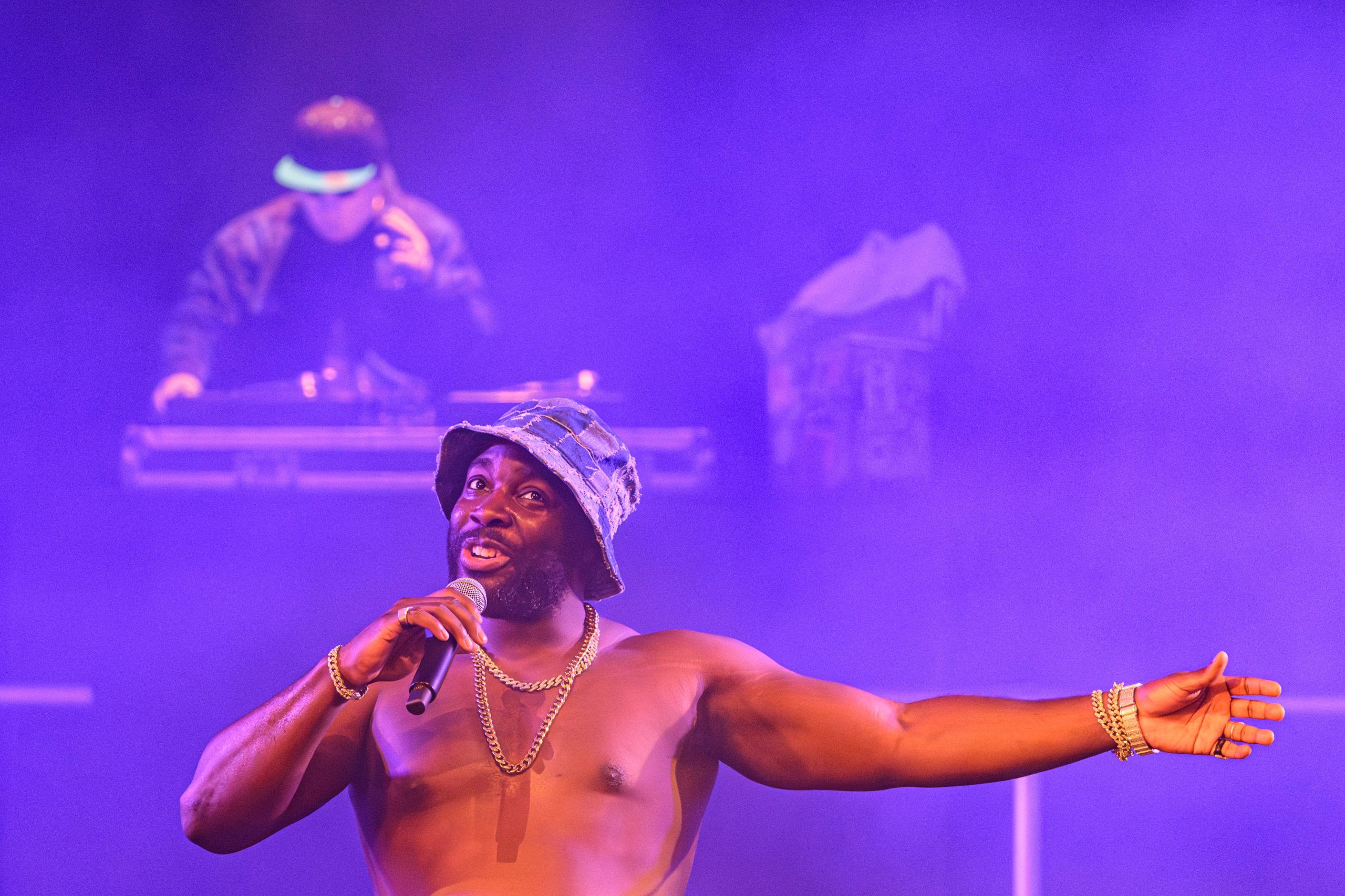
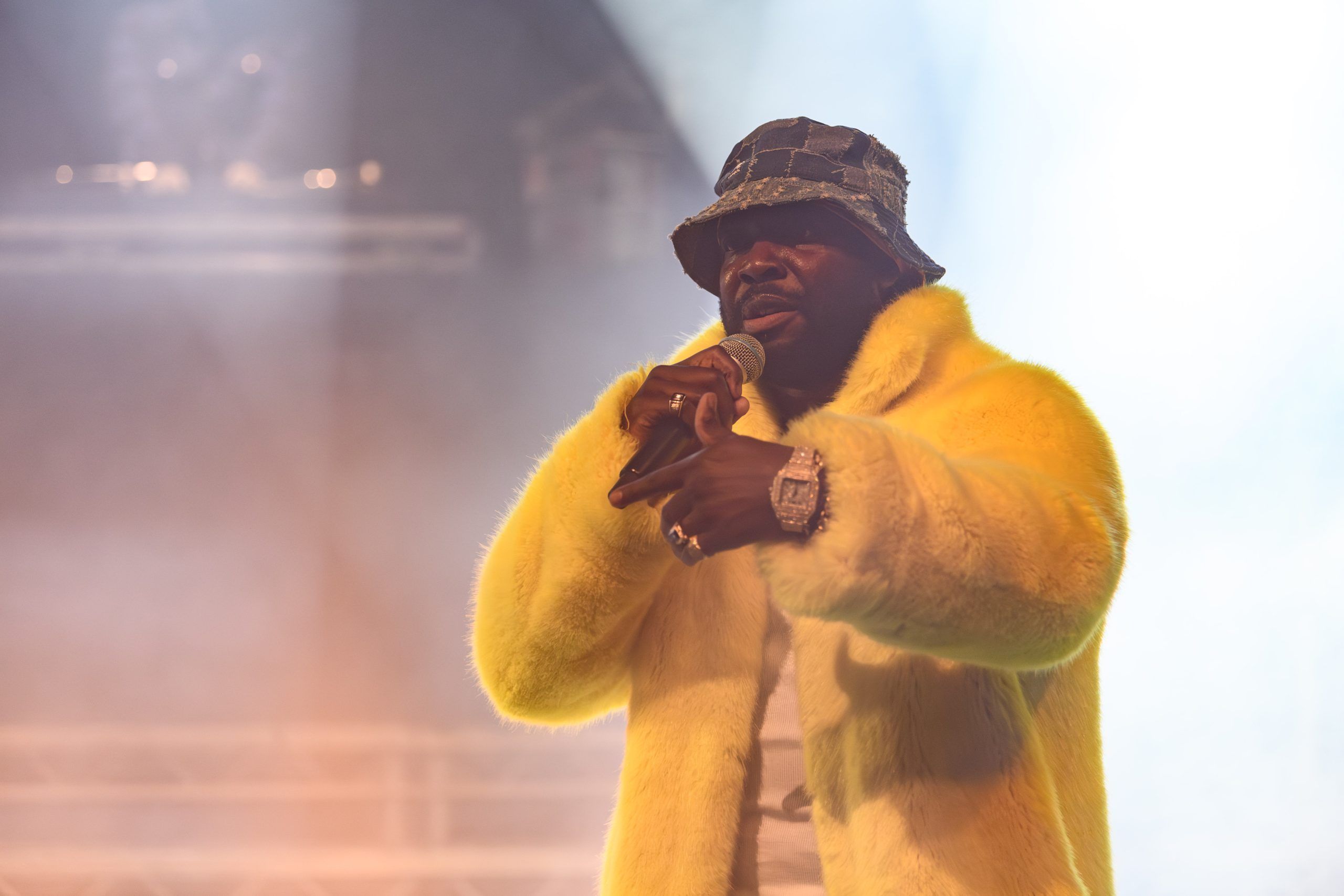
You mentioned Kendrick Lamar. His Super Bowl performance was all about Black identity, resistance, and refusing to conform to expectations. Tambo & Bones explores those same ideas, but through satire and dark humour. What kind of connection do you see between the two? And how important do you think both his performance and this play are in actually pushing for change?
When I saw the Super Bowl performance, I thought, the world is ready for this. The world is ready for Tambo & Bones. The world has been ready for Tambo & Bones for such a long time. Because it’s everything you just said – resistance, refusal to settle, to demand more, to not sit down, to not be humble. It’s about knowing that you have just as much right to exist, to take up space, to succeed, as anyone else in that country with its complicated history.
What I loved about Kendrick’s performance was how it exposed the myth of the American Dream. That lie that people are sold – the idea that if you just work hard enough, you can have anything. There’s a line in the play that speaks to this. Bones, when he’s on Sway in the Morning, is told something like, you own more land than Oprah now, and he responds by saying, “The rules of this country are laid out pretty cleanly.”. That’s it right there.
We actually drew a lot from Kendrick. Tambo’s war song, where he incites rebellion – “Cut my ties, I sever her, make it rain fire like it’s Jericho. Tired of the police, no lease, no peace, show me.” – was inspired by Kendrick’s Grammy performance a few years ago. He was in handcuffs, leading a group of prisoners breaking free. The references are everywhere. If you’re a hip-hop fan, the play is full of Easter eggs. There are nods to Biggie, Tupac, Kanye, Kendrick, DMX, Rick Ross – it’s all in there.
As for how ready the world is for change, I think the world has always been resisting and changing. I’ve just become more aware of it. History swings like a pendulum. It moves left, then right, and maybe this is me becoming a centrist dad, but I think the world functions best somewhere in the middle – where you’re not dealing with the extremes of far-right or far-left ideologies. Right now, America is in a dangerous place, politically. The world we’re seeing now feels like it’s heading toward something explosive, something deeply unsettling. It’s a world that’s already leading to civil unrest, to racial conflict. And it’s not just trickling down – it’s being directed from the top.
Trump has built his entire career – both in business and politics – on branding, spectacle, and profiting off division. Tambo & Bones critiques cycles of exploitation, particularly when it comes to race and capitalism. Do you see his rise as part of that same pattern?
Yeah, I mean, I think what this play does is draw a direct line from capitalism to control. It shows how wealth, power, and exploitation are deeply intertwined. When you look at some of the world’s most successful capitalists, they’ve all built their empires on the backs of others – through the exploitation of labour, of people, of resources. It’s about shutting people down and closing doors in order to enrich yourself and your own circle.
And once you’re in that circle, you look around and see who else is there – whether it’s Christians, hedge fund managers, white people, or those who went to the same private schools. You protect your own, because that’s what history has always done. It’s no different today than it was centuries ago. The methods have changed, the technology has evolved, but the fundamental principles of power and exclusion remain the same.
That’s why I love that the play also explores technology – because technology is going to be the thing that shapes the next version of the world. We’re seeing that already with people like Musk and Bezos. The tools of control are shifting, but the structures of power? Those are staying the same.
Do you think theatre has a duty to push people towards action, or is it just enough to make them think about the issues?
Both, really. I think theatre absolutely pushes people towards action, but those actions are often small, almost imperceptible – tiny shifts in behaviour or perception that change the way someone moves through the world. Maybe they think about people differently. Maybe they question things they hadn’t before.
I read a brilliant book called The Art of Relevance by Nina Simon, which talks about how art is about relevance. And relevance is about enabling people to reach meaningful conclusions in their own lives. That’s what theatre has to do. People always ask me, What do you want the audience to take away from this play? But an audience only exists for as long as the performance lasts. Then they go back to being individuals, each carrying something different from what they’ve seen.
That’s why one person might walk away feeling nothing, while another might be so moved that they need to reach out and hold onto the person next to them. That’s what matters – the personal, unspoken impact that lingers long after the show is over.

Black theatre is gaining more visibility, but there are still major hurdles. What do you think people in the industry still don’t understand about the challenges Black theatre-makers face?
I think we’re finally finding a mainstream presence. Big Life was the first all-Black musical to transfer to the West End in the mid-2000s. Clint Dyer became the first Black director to take a show into the West End only in the last five or six years. It does feel like we’re taking up more space now, and that’s always been the goal – to have a real seat at the table, to be part of the West End, to be on major stages across the country.
One of the biggest things I appreciated when Lynette Linton was running the Bush Theatre and Kwame Kwei-Armah was at the Young Vic was that I didn’t have to justify the Black experience before talking about the story. At some other institutions, you still have to explain, Here’s why Black people are important, before you even get to Here’s why this is a great play. You should never have to do that first part.
I’ve heard artistic directors say outrageous things, like, We can’t put a Black face on the poster because then nobody will come. That was said to me in a regional theatre. And so many theatres have simply neglected the Black communities in their areas for years. But we’re seeing positive changes, like at Bristol Old Vic and the Royal & Derngate in Northampton, where new leadership is actively trying to repair those relationships and give these communities real ownership over spaces that should have always been theirs.
The problem is, there’s a history of false promises. Every five or six years, theatres pledge to do more work for diverse communities – and then they don’t. Then, five or six years later, they remember, Oh, we did say that, didn’t we? And they make the same pledges all over again. The reality is, capitalism pushes them to go for the easiest, most reliable audience – the one they’ve cultivated over 40 years.
That said, there’s been progress. For Black Boys Who Have Considered Suicide, Retrograde, Get Up, Stand Up! – Black-led work is making it into town more and more. Black leadership is growing too – Stella Kanu as the executive director of the Globe, for example. And shows like Shifters last year, a beautiful two-hander, taking up all that space. So yes, we’re moving forward. But like you said before, it’s a constant fight. The pendulum is always swinging.
If you could go back and give your younger self one piece of advice about working in theatre, what would it be?
I think I’d say something like, Hello, young Matthew. I know you think they don’t need you or want you, that your voice is unnecessary. But it’s vital. It’s important. And there’s space for you at the table.
Tambo & Bones is on tour until May 24th 2025. Book your tickets at atctheatre.com
Words by Nick Barr
Photography Jane Hobson
Enjoyed this? Check out this interview with debut playwright Hunia Chawla

